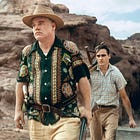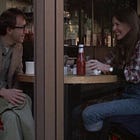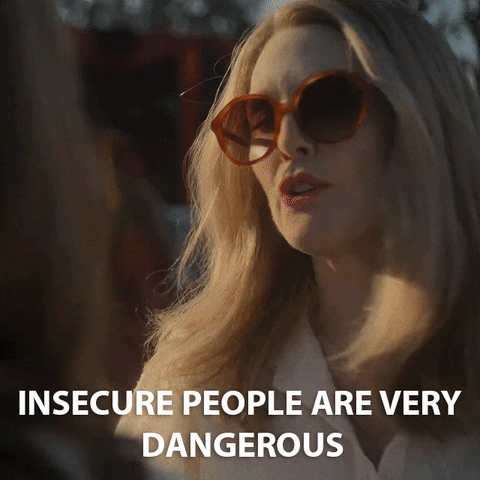Re-ranking my top 10 movies of 2013
A decade later: what faded, what holds up, and what I overlooked.
The longest-standing annual tradition on the Marshall and the Movies Substack continues!
With a decade’s worth of retrospection, I’m taking a look back at the top 10 list I made in 2013 and seeing how I’d rank that year’s cinema today. Spoiler alert: this one changed the least of any thus far. That’s due in no small part to attending the Cannes Film Festival (where I saw half of the films here), working at an indie movie theater, and living in London for a semester.
Past Marshall didn’t give Current Marshall a ton to respond to in the preamble:
“Normally, I can come up with a unifying theme for my top 10 list. But this year, I really struggled to find a common thread or through-line. Ironically, even in the absence of some sort of angle for this piece, I would still consider 2013 to be the best year for movies in a long time, at least since 2010.”
That observation holds — I think we’ll see 2013 as one of the defining movie years of the Aughts. It’s perfectly timed after the WGA strike and the Great Recession squeezed product and imagination … but before the onslaught of the MCU’s aftermath, peak TV, and the miniseries boomlet.
I should also acknowledge my subject position here: I turned 21 in 2013! There’s something special that happens between the ages of roughly 16-21, I find. The movies you watch at this stage of life become inextricably linked with your growth and change. They help push the borders of what the world looks like and thus forever hold that special place in the heart. I feel fortunate that many of these films came just in time.
So without further ado, let’s engage in what I used to call “Listful Thinking” on my WordPress blog!
What Fell Off the List + Honorable Mentions
Enough Said (was #10): Subscribers got to read me going long on filmmaker Nicole Holfocener, my self-described “parabolist laureate of white women,” on the occasion of her latest release You Hurt My Feelings this summer. I think that film slightly eclipsed Enough Said in doing a similar thing, but this remains a joyous watch that I cherish deeply. Available to rent from various digital platforms.
Philomena (was #7): This touching emotional journey is far from forgotten by me! It made last year’s list entitled “The Life-Changer Canon” of films that changed the way I saw the world in my twenties. It’s just perhaps a bit too self-contained to chart in a year full of real game-changers. Available on Max.
Beyond the Hills (unranked): As someone fascinated by the corruption of religious communities as a subject, this Romanian New Wave drama proved a difficult and damning watch. Not the kind of thing I’m always eager to return to, but it’s yet another feather in the cap of Cristian Mungiu as one of the globe’s most exciting and incisive filmmakers. Available on The Criterion Channel.
Her (unranked): I always feel as if I’m one rewatch away from Spike Jonze’s surprisingly optimistic AI-powered future romance fully clicking for me. It’s so close to winning me over fully, and maybe one day I’ll find what’s keeping me at arms’ length … or embrace it wholeheartedly. The wisdom about love and relationships shines through all the same, though. Available on Max.
#10 — The Hunt
2013 ranking: #9 (down 1)
THEN: “This drama of an innocent man put through the wringer stands high and mighty in 2013 thanks to the brilliant performance of Mads Mikkelsen, a screenplay that would make Arthur Miller proud, and the steady direction of Thomas Vinterberg.”
NOW: I see high drama — fitting, given that I’ll be seeing a stage adaptation of the film in 2024 — but more of Henrik Ibsen’s intimate personal drama than Arthur Miller’s sweeping allegory. My fear was that time would turn The Hunt into some kind of cancel culture parable that felt the tremors of a cultural earthquake coming. Instead, Vinterberg’s crowning achievement is a trenchant analysis of the rituals we have to bring people into institutions … which stand in contrast to how slapdash we are when it comes to expelling and reintegrating them.
Available for free with ads on Tubi TV.
#9 — The Bling Ring
2013 ranking: not ranked
THEN: “I managed to enjoy The Bling Ring not only in spite of its superficiality – but also because of it. The film captures a vibe above all else, one that is essential to understanding the heedless hedonism of the film’s titular thieving gang.”
NOW: Contemporaneous accusations that Sofia Coppola was glorifying the would-be Robin Hoods of the Hollywood Hills sure look dumb now! The Bling Ring plays as absolutely scathing commentary with even a smidge more distance from the events it depicts. But that Coppola touch of refusing to identify easy targets for satire and ridicule — coupled with that deep understanding of the allure surface appearances can hold — makes it anything but simple satire. (Linked below: I spent a good while analyzing it with Sofia Coppola scholar Hannah Strong here on the newsletter.)
#8 — 12 Years a Slave
2013 ranking: #8 (no change)
THEN: “What [Steve McQueen] creates in 12 Years a Slave is a brilliant hybrid of an art film with a traditional historical narrative movie, clearly communicating a story for all viewers with haunting complimentary imagery.
NOW: I was startled to see so many people on Twitter ranking this among the lesser Best Picture winners of the past decade. 12 Years a Slave is one of the best to ever win the Academy’s big prize (linked below: see my longer write-up as I ranked it among all 94). I think because anything that depicts slavery so frankly is by nature difficult to watch, people presume Steve McQueen’s take on the subject is indistinguishable from other well-meaning but misguided attempts to dramatize the institution. This is an unflinching, unsparing look at the human toll of such barbarism rendered with furious power by McQueen’s eclectic aesthetic arsenal.
Available to rent on various digital platforms.
#7 — Inside Llewyn Davis
2013 ranking: #5 (down 2)
THEN: “The latest entry to [the Coen Brothers’] remarkable canon may appear slight at first glance. But look a little harder into their script, which is just as carefully constructed as every shot in the film.”
NOW: Inside Llewyn Davis may well be a perfect film, which is just standard issue for the peerless Coens. A part of me always wants this to be about something more than rotten luck and bad breaks, but then I have to remind myself that the sense of feeling alone in one’s art/craft and disconnected from the workings of the world is the very point here. It’s a folk song in cinematic form, familiar yet feeling new with each repetition.
Available on Paramount+ with Showtime.
#6 — Blue Jasmine
2013 ranking: #6 (unchanged)
THEN: “No movie has stuck with me more throughout the year than this one; the question of social forces vs. personal agency in Jasmine’s demise haunting my thoughts so much that I paid an obscene amount to see it again four months later.”
NOW: No one’s exactly lining up to lay laurels on Woody Allen these days, though he does deserve some credit for creating a wicked web for Cate Blanchett to enmesh herself in here. I fixated on the topical elements of Blue Jasmine, a Madoff-tinged take of A Streetcar Named Desire, when it came out. But it’s aging like a fine wine due in large part to Blanchett’s timeless spin on what could easily become an era-specific caricature. Caught between an idealized past and an unyielding present, who wouldn’t feel Jasmine’s urge to beat against the tide and swim towards sunnier shores?
Available to rent on various digital platforms.
#5 — Frances Ha
2013 ranking: not ranked
THEN: “I’ve always seen most of myself in highly flawed protagonists, but Baumbach and Gerwig’s Frances is so frustratingly heedless that it becomes hard to root for her at all.”
NOW: Well, what a difference a decade makes. My journey toward understanding Frances Ha became one of the most important movies for me personally as it became a measuring stick of my own maturity. I have little left to say that wasn’t documented in this personal essay I wrote in 2018 other than perhaps another thank you to Greta Gerwig for this cherished capsule of millennial prolonged adolescence.
Available on Netflix, The Criterion Channel, and MUBI.
#4 — The Past
2013 ranking: #4 (no change)
THEN: “[Asghar Farhadi] once again shows his incredible command and understanding of human behavior, crafting characters with complex emotions and intricate facades to conceal their transgressions.”
NOW: Farhadi’s Iran-set A Separation garnered all the glory and decade-best mentions, but The Past is still his crowning achievement to me. This rich human drama understands the complicated manner in which people interact. Farhadi may be the best working artist when it comes to depicting how our lack of knowledge, both of self and of the world around us, proves the driving force in dysfunction. Each time, this film floors me anew.
Available for free with ads on Tubi TV.
#3 — American Hustle
2013 ranking: #1 (down 2)
THEN: “The Fighter and Silver Linings Playbook showed us that David O. Russell had a mastery of coaching performance, and American Hustle is elevated to the realm of the sublime because Russell uses that understanding to create the ultimate performances of performance.”
NOW: There’s an angsty and verbose personal essay I once wrote about how American Hustle moved me as a frequent social code-switcher; it will likely never see the light of day. My admiration and appreciation for what David O. Russell captures on screen here has diminished some in terms of reliability as I’ve gained a greater sense of confidence in my own identity. The Scorsese/PTA wannabe elements stick out a little bit more as that luster fades, but it’s still not enough to overpower the quartet of exceptional meta-performances. American Hustle remains my favorite movie about acting that does not involve characters performing for the stage or screen.
Available on Paramount+ with Showtime.
#2 — Stories We Tell
2013 ranking: #2 (no change)
THEN: “Somehow, [director Sarah Polley] manages to find rhyme and reason to it all, presenting all the recollections of her late mother Diane in one giant story that reveals the large gap in between reality as we experience it and the way we ultimately remember and retell it.”
NOW: Stories We Tell captures the all-encompassing experience of family history like a warm, and at times smothering, blanket. This is more than just a scrapbook or personal project because Sarah Polley has taken the time to think about what her life means, both as its own experience and as an artistic journey. The result is something graceful and generous to all who want to better understand the inescapable network of mutuality forged by our blood.
Available for free with ads on Freevee through Amazon.
#1 — Spring Breakers
2013 ranking: #3 (up 2)
THEN: “[Harmony] Korine somehow manages to criticize the dark underpinnings of the spring break mentality while also capturing the almost spiritual allure it has.”
NOW: SPRANG BREAK FOREVA! Spring Breakers still feels like a milestone, both personally for me and cinematically for the culture. Even though Harmony Korine is not a millennial, his portrait of early-aughts fable of sexual and violent angst feels like the first time the generation came of age on screen. In form and content alike, this film depicts and critiques a fantasy in intoxicating fashion. (Linked below: my much more eloquent analysis of what lies inside the haze of the film.)
You can always keep up with my film-watching in real-time on the app Letterboxd. I’ve also compiled every movie I’ve ever recommended through this newsletter via a list on the platform as well.
I’ve always been fascinated by the stats behind the movie business — famously, I kept a notebook at age 7 where I wrote down the weekend box office rankings. So hearing that Netflix is opening up viewership data is catnip to me personally, and the company’s Ted Sarandos provides a good primer on how to interpret that.
I liked this close read of Nicolas Cage’s career through the prism of Dream Scenario by Isaac Butler. (It’s a reminder I need to finish his book The Method in 2024 … I started last year but put it away when it would whack my face if I was reading it in bed.)
I’ve had the following three browser tabs open to read for at least six months, and with the Twixmas break, I finally did:
“The Making of Tom Hanks,” The Atlantic
“Will the Ozempic Era Change How We Think About Being Fat and Being Thin?,” The New Yorker
“Why Do We Love ‘The Graduate?’,” The New Yorker (from 1968!)
I ranked my favorite 10 scenes of 2023 for Crooked Marquee — it’s not entirely overlapping with my top 10 films, either!
I reviewed Anyone But You for /Film — tried to make it fun to tell you the movie was exactly what you are probably expecting!
My final interview of 2023 was The Iron Claw writer/director Sean Durkin for Slant Magazine.
You can keep track of all the freelance writing I’ve done this year through this list on Letterboxd.
At long last, my top 10 movies of 2023 arrive on New Year’s Eve.
Yours in service and cinema,
Marshall


















